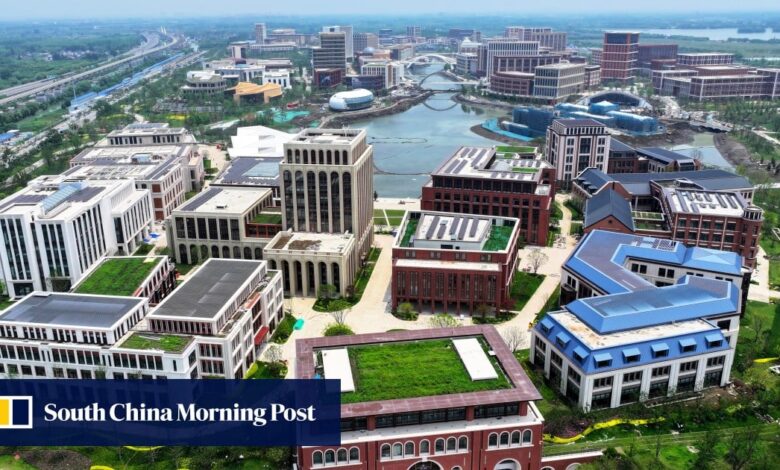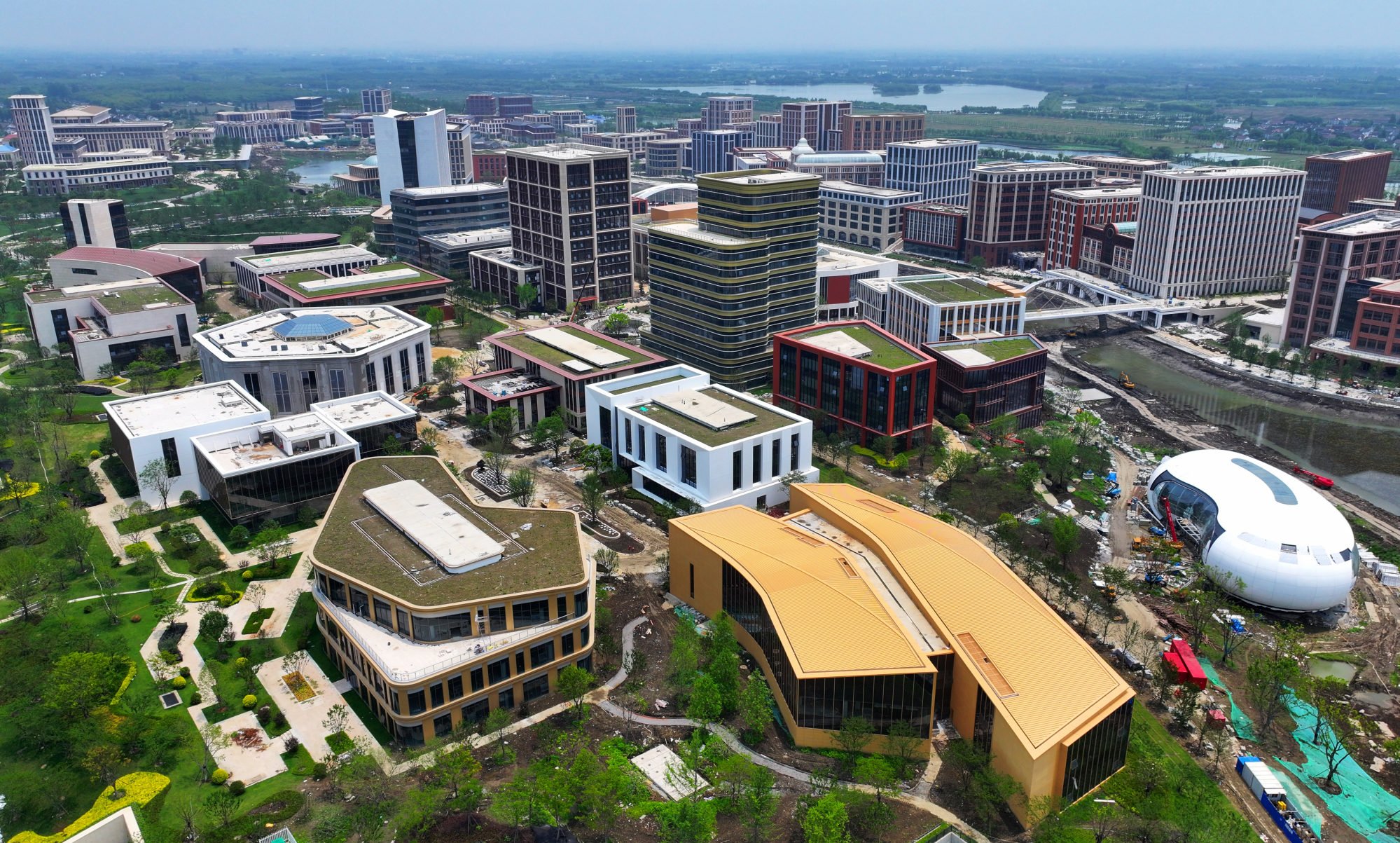Huawei completes US$1.4 billion campus in Shanghai ‘with 100 cafes’ to lure foreign talent

Located in Jinze, a town in Shanghai’s Qingpu district, Huawei gave its new campus the name Lianqiu Lake R&D Centre by last Tuesday, according to an announcement on the municipal government’s website that cited official media Jiefang Daily.
The campus comprises eight blocks and 104 buildings – making up a complex of laboratories, offices and leisure areas – connected via an internal railway system.
While some bridge construction and greening projects are still being finalised, the development of signage, district roads and train service for the Lianqiu Lake campus had been completed, the Jiefang Daily reported last Thursday.
Huawei did not immediately respond to a request for comment on Monday.
Covering an area of 160 hectares, Huawei’s Lianqiu Lake campus will serve as its global R&D hub and start operations this year, according to previous announcements by the local government.
“[We aim to] create an atmosphere suitable for foreign scientists to work and live in,” Ren told employees in an internal meeting in 2021, which was later made public by Huawei.
He had envisioned perks like the more than 100 cafes on campus to attract young talent from overseas.

While the US Department of Commerce does not mention employment, the rules “restrict the ability of US persons to support the development or production” of chips at “certain China-located semiconductor fabrication ‘facilities’ without a licence”.
Last year, Huawei invested 23 per cent of its total revenue – or 164.7 billion yuan – in various R&D initiatives, according to the company’s annual report. Around 114,000 employees, or 55 per cent of Huawei’s workforce, are involved in R&D activities.
Source link


